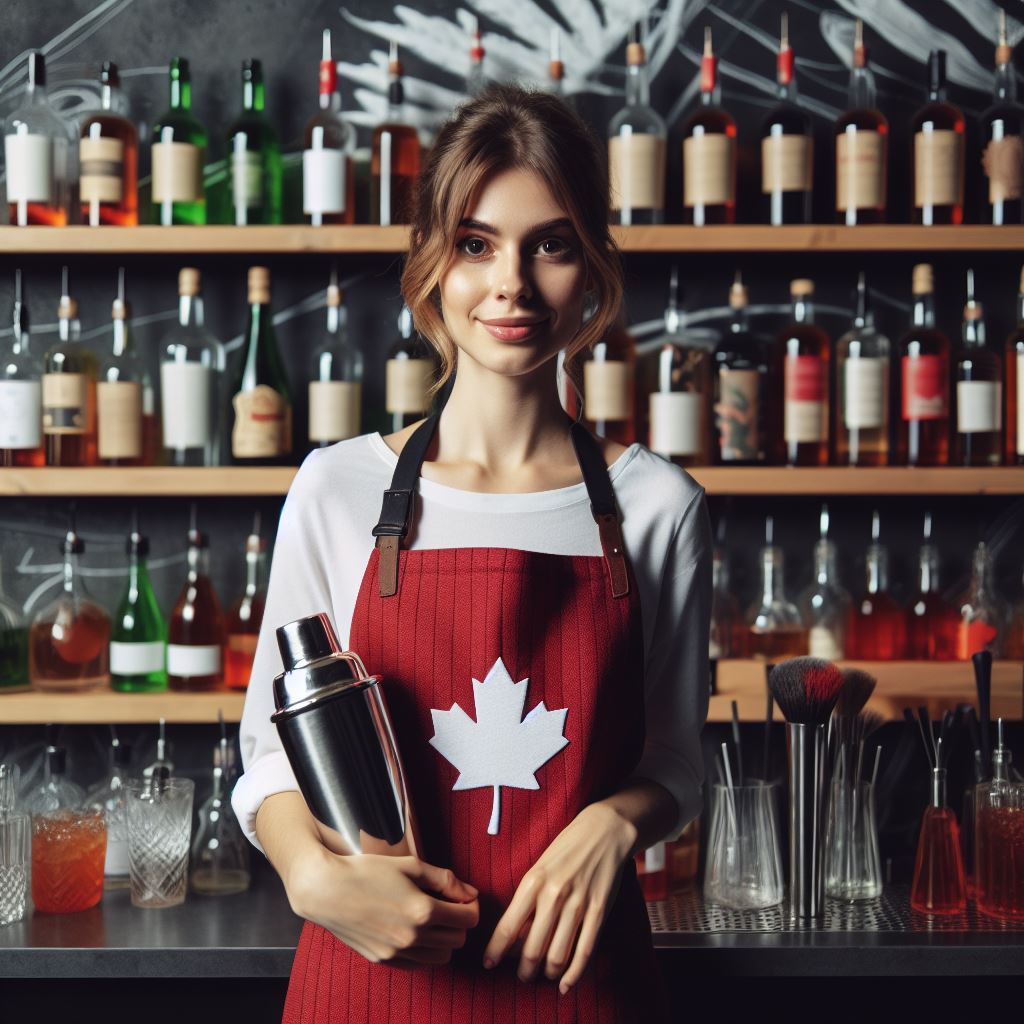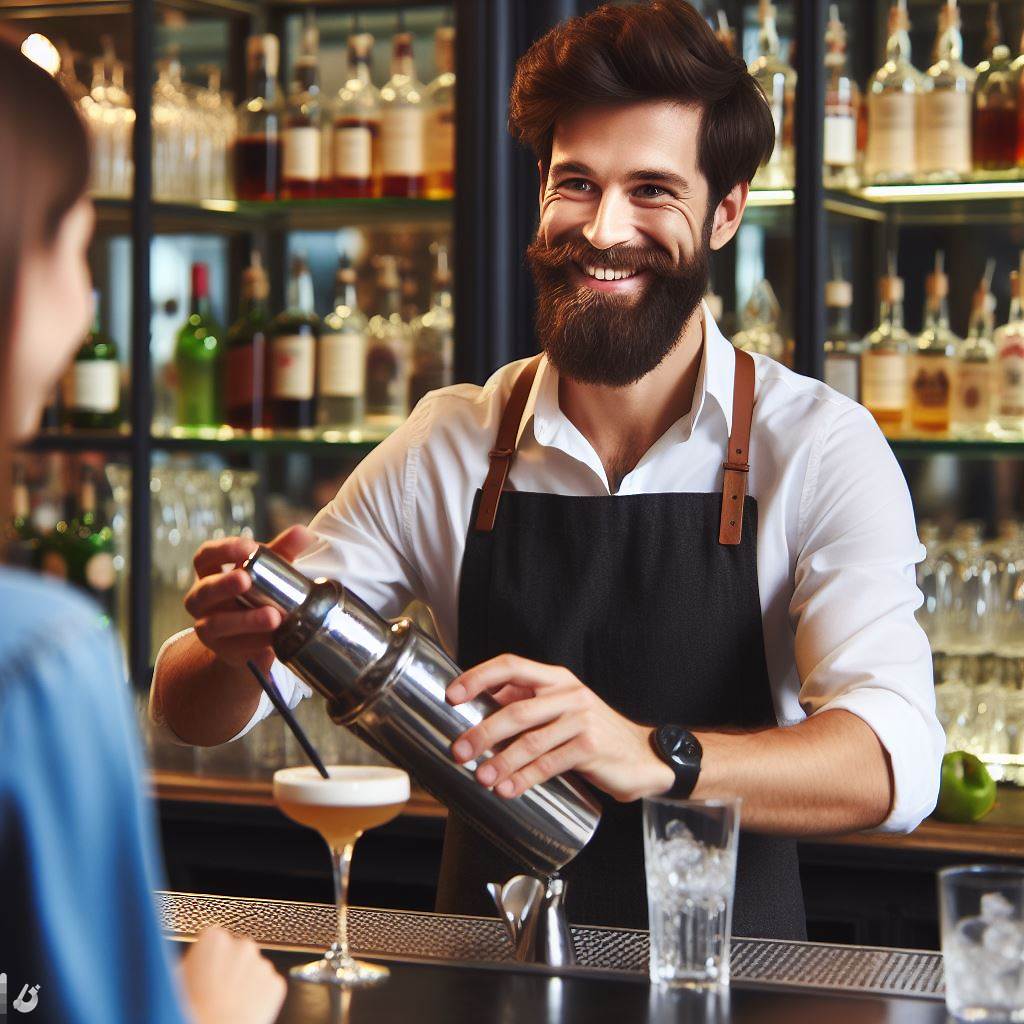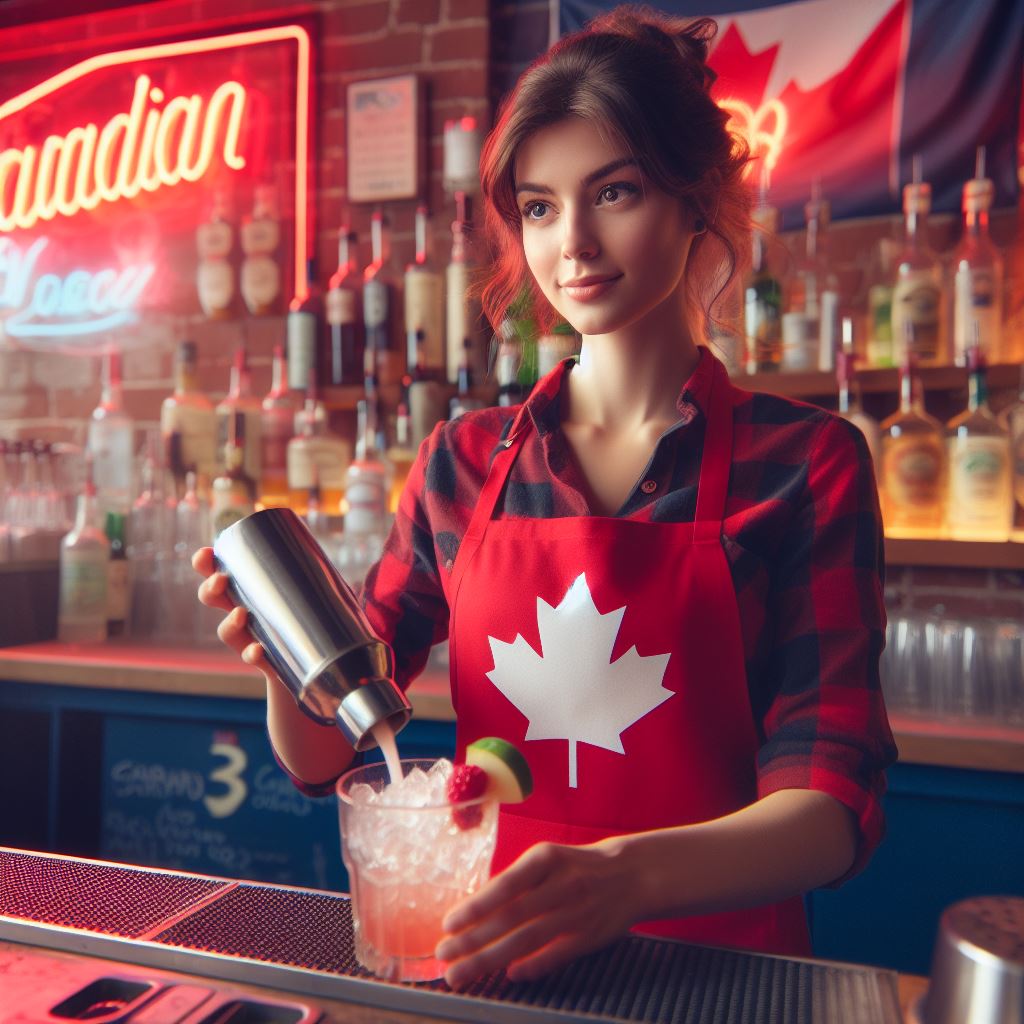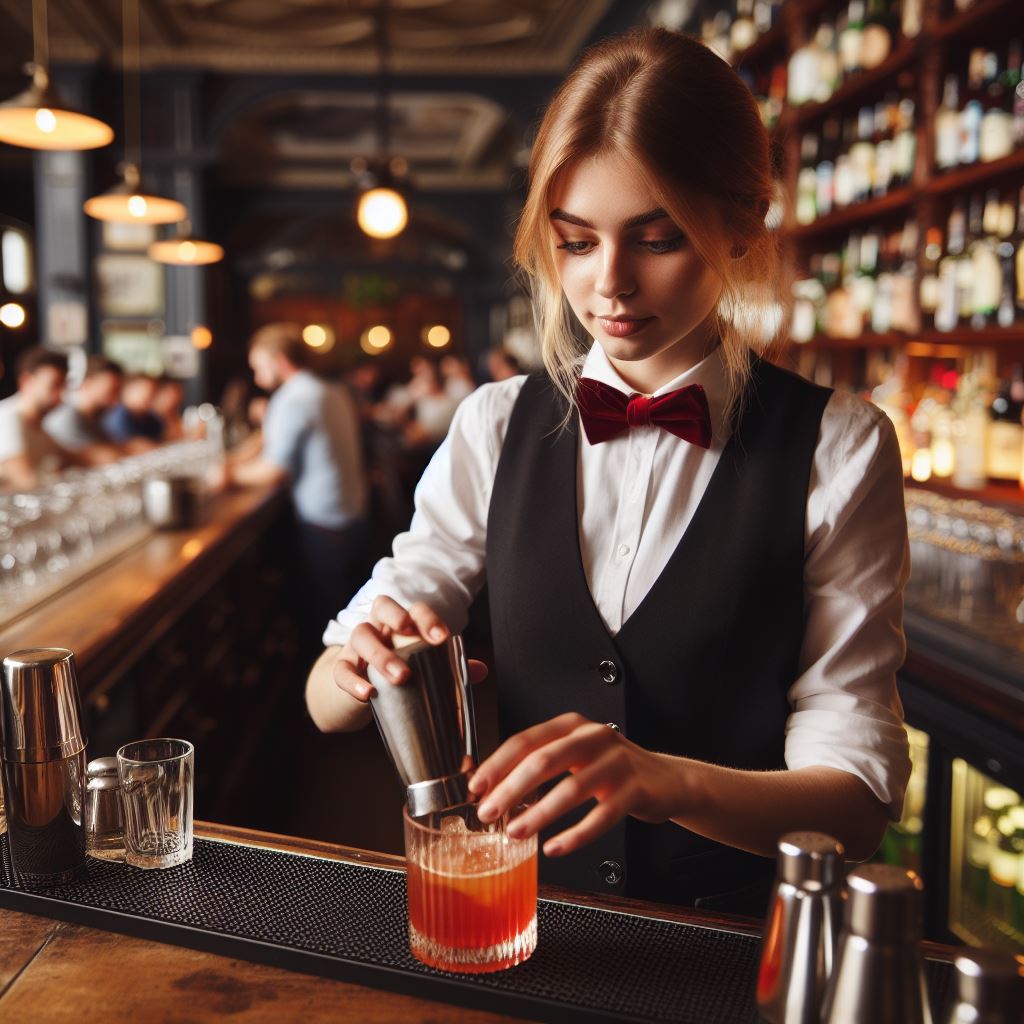Introduction
Importance of Mixology in Canadian Bars
Crafting impeccable cocktails defines the essence of Canadian bars, elevating the drinking experience for patrons.
Mixology isn’t merely about blending spirits; it’s an art that reflects the diverse cultural tapestry of Canada.
Purpose of the Blog Post
This post aims to unravel the secrets of mixology, offering a roadmap for Canadian bars to master the art.
From understanding flavor profiles to perfecting garnishes, each section delves into the nuances, ensuring a comprehensive guide for both novice and seasoned mixologists.
Let’s embark on a journey where every pour tells a story, and every sip resonates with the rich heritage of Canadian mixology.
The Basics of Mixology
Mixology, often referred to as the art of creating cocktails, involves the meticulous crafting of drinks using a combination of various ingredients, techniques, and presentation skills.
Role of mixologists in bars
Mixologists play a pivotal role in bars as they are responsible for creating unique and innovative cocktail recipes that cater to the preferences of customers.
Key skills and knowledge required for mixology
To excel in mixology, one must possess essential skills and knowledge.
These include a deep understanding of various spirits, mastery of drink proportions, and the ability to harmonize flavors.
Additionally, mixologists should have a keen eye for detail, as they need to measure precise amounts of ingredients to ensure the perfect balance in each cocktail.
Excellent communication skills are a must for mixologists, as they interact directly with customers and must be able to recommend and suggest cocktails based on their preferences.
Creativity is another vital skill in mixology.
Mixologists are constantly experimenting with new ingredients, flavors, and presentation techniques to craft unique and visually stunning cocktails.
In-depth knowledge of different cocktail recipes and their origins is also essential.
This allows mixologists to create classic cocktails and put their own twist on them, adding a personal touch to their creations.
Essential Skills and Passion for Crafting Memorable Cocktails
Furthermore, mixologists must be well-versed in the proper handling and storage of spirits, as well as the use of bar equipment, such as shakers, strainers, and muddlers.
Bartending knowledge, including the ability to pour and mix drinks efficiently, is crucial for mixologists to maintain a fast-paced and efficient workflow.
Attention to detail is paramount to successful mixology.
From the garnishes to the glassware, mixologists must ensure that every aspect of the cocktail is visually appealing and enhances the overall drinking experience.
Lastly, a passion for mixology is what truly sets apart exceptional mixologists.
They have a genuine love for creating unforgettable flavor combinations and delivering exceptional service to customers.
In fact, mixology is more than just mixing drinks. It is an intricate art form that requires a wide range of skills, knowledge, and creativity.
Mixologists play a vital role in bars by crafting unique cocktails and creating memorable experiences for customers who seek elevated drink options.
Becoming a successful mixologist demands continuous learning and the passion to push boundaries, paving the way for exciting innovations in the field of mixology.
Essential Tools for Mixology
When it comes to mixology, having the right tools is crucial in creating exceptional cocktails.
As a bartender in a Canadian bar, it’s important to familiarize yourself with the essential tools that will help you craft delicious drinks for your patrons.
Here are some must-have tools for any mixologist:
Cocktail shaker
This tool is essential for properly mixing drinks and ensuring that the flavors are well-blended.
It consists of a metal or glass container with a tight-fitting lid.
By shaking the cocktail shaker, you can thoroughly mix the ingredients and achieve the desired texture and taste.
Jigger
Measuring ingredients accurately is key to achieving consistency in your cocktails.
A jigger, typically made of stainless steel, provides precise measurements for both larger and smaller quantities of liquids, allowing you to create perfectly balanced drinks every time.
Bar spoon
Used for stirring and layering ingredients, a bar spoon is a versatile tool that helps you mix cocktails gently without disturbing the texture.
It often has a long handle with a twisted design, making it ideal for creating layered drinks or incorporating delicate ingredients.
Strainer
When pouring your cocktail into a glass, a strainer will ensure that any unwanted ice cubes or fruit particles stay in the shaker.
It’s an essential tool for achieving a smooth and clean drink while keeping any unwanted debris out.
Muddler
To extract the flavors and aromas from fresh fruits, herbs, or spices, a muddler is a must-have tool.
By gently mashing these ingredients at the bottom of a glass or shaker, you can release their essential oils and enhance the overall taste of your cocktail.
Mixing glass
Adding elegance and functionality to your mixing process, a mixing glass allows you to combine ingredients smoothly.
Its see-through design enables you to visually inspect the cocktail’s color and texture while ensuring a proper mix.
Garnish tools
The final touches on a cocktail can elevate its presentation and taste.
Garnish tools, including peelers, zesters, and cocktail picks, allow you to add creative and visually appealing finishing touches to your drinks.
Whether it’s a twist of citrus peel or a carefully arranged fruit garnish, these tools will enhance the overall experience for your patrons.
In general, equipping yourself with the right tools is essential for any bartender looking to excel in mixology.
By having a cocktail shaker, jigger, bar spoon, strainer, muddler, mixing glass, and garnish tools at your disposal, you can confidently create a wide range of delicious and visually stunning cocktails that will impress your customers in the Canadian bar scene.
Read: The Role of a Bartender: Beyond Mixing
Essential Ingredients for Canadian Bars
Having discussed the essential ingredients for Canadian bars, it is important to understand how these components contribute to mixing a perfect cocktail.
The right combination of base spirits, mixers, bitters and syrups, fresh ingredients, and ice is the key to crafting delicious and well-balanced drinks.
Unlock Your Career Potential
Visualize a clear path to success with our tailored Career Consulting service. Personalized insights in just 1-3 days.
Get StartedBase spirits (vodka, whiskey, rum, tequila, gin)
Base spirits form the foundation of any cocktail. Vodka, known for its versatility, can be used in various mixed drinks, while whiskey adds complexity and depth.
Rum brings a tropical vibe to cocktails, and tequila is a must for tequila-based drinks like margaritas.
Finally, gin is essential for classic cocktails like the gin and tonic or the martini.
Mixers (soda, tonic water, ginger ale, fruit juices)
Mixers are essential for creating refreshing and bubbly cocktails.
Soda water provides carbonation, while tonic water adds a bitter and tangy element.
Ginger ale lends a sweet and spicy flavor, and fruit juices such as orange, pineapple, and cranberry add a fruity twist to cocktails.
Bitters and syrups (angostura bitters, simple syrup)
Bitters and syrups are crucial for adding depth and complexity to cocktails.
Angostura bitters, with its warm and spicy notes, is a staple in classic cocktails like the Old Fashioned.
Simple syrup, made from equal parts sugar and water, is used to sweeten cocktails and balance the flavors.
Fresh fruit and herbs
Fresh fruit and herbs are not only visually appealing but also enhance the aroma and taste of cocktails.
Citrus fruits like lemons, limes, and oranges are commonly used for garnishing.
Herbs like mint, basil, and rosemary add a fresh and aromatic touch to cocktails, elevating their overall experience.
Ice
Lastly, ice is an often overlooked but vital component in mixology.
It chills cocktails to the right temperature, dilutes them to the desired strength, and provides a pleasing mouthfeel.
Canadian bars must always ensure a steady supply of ice to meet the demands of their customers.
In essence, Canadian bars should stock essential ingredients like base spirits, mixers, bitters and syrups, fresh fruit and herbs, and ice to create a well-rounded cocktail menu.
The combination of these elements allows bartenders to craft delicious and visually appealing drinks that will leave customers coming back for more.
So, whether it’s a classic cocktail or an innovative creation, having these essential ingredients is a must for Canadian bars to excel in the art of mixology.
Read: Craft Beer Trends in Canadian Bars
Classic Cocktails Every Canadian Mixologist Should Know
Caesar
Invented in Canada, the Caesar is a classic cocktail that every Canadian mixologist should master.
Made with vodka, clamato juice, hot sauce, Worcestershire sauce, and spices, it is an iconic Canadian drink.
Maple Old Fashioned
Bringing a Canadian twist to the traditional Old Fashioned, the Maple Old Fashioned is a must-know cocktail.
It combines whisky, maple syrup, and bitters, creating a rich and flavorful drink that captures the essence of Canada.
Toronto Cocktail
The Toronto Cocktail is a cocktail with a long history in Canada and is a staple in Canadian bars.
Featuring rye whisky, Fernet-Branca, and sweet vermouth, it offers a unique and robust flavor profile.
Quebec Sour
The Quebec Sour is a variation of the classic Whiskey Sour that highlights Québec’s maple syrup production.
By adding maple syrup and regional spirits to the traditional recipe, it creates a distinct and delicious cocktail.
Vancouver Fizz
Representing the West Coast, the Vancouver Fizz is a refreshing cocktail that showcases the flavors of the region.
Combining gin, lemon juice, simple syrup, soda water, and bitters, it is a perfect drink for any occasion.
With these classic cocktails in your repertoire, you’ll be well-equipped to impress any Canadian bar patron.
Each of these drinks has a unique story and flavor profile that represents a different part of Canada.
So whether you’re serving a Caesar on the east coast or a Vancouver Fizz on the west, these cocktails will elevate your mixology skills.
Remember, presentation and attention to detail are key in creating the perfect cocktail.
From garnishes to glassware, every element plays a role in enhancing the overall experience for your customers.
Practice, experiment, and don’t be afraid to put your own twist on these classic cocktails.
With passion and creativity, you can become a master mixologist, serving up memorable drinks to your patrons.
So raise your glass and toast to the classic cocktails that have made their mark on Canadian bar culture.
Cheers to the Caesar, Maple Old Fashioned, Toronto Cocktail, Quebec Sour, and Vancouver Fizz!
Read: Calgary’s Cocktail Scene: A Deep Dive

Proper Techniques for Mixology
Proper mixology techniques are essential for creating delicious and visually appealing cocktails.
Whether you’re a professional bartender or a home enthusiast, mastering these techniques will elevate your drink-making skills to a whole new level.
The art of muddling
The art of muddling involves gently crushing ingredients at the bottom of a glass to release their flavors.
Using a specialized muddler made of wood or stainless steel ensures proper extraction without affecting bitterness.
Be cautious not to over-muddle and ruin the balance of the drink.
Understanding shaking and stirring
Understanding the difference between shaking and stirring is crucial in mixology.
Shaking is recommended for cocktails with fruit juices or mixers to create a well-blended mixture.
On the other hand, stirring is ideal for maintaining clarity and proper dilution in spirit-based cocktails.
Proper glassware selection
Choosing the right glassware for serving cocktails is also important.
Long, refreshing drinks with ice require highball or Collins glasses, while stemmed glasses like martini or coupe glasses add elegance to chilled cocktails.
Old-fashioned glasses are perfect for spirit-forward or on-the-rocks drinks.
Garnishing techniques
Garnishing is the final touch that enhances the overall presentation and flavor profile of a cocktail.
Citrus peels, fruit slices, herbs, and cocktail cherries are popular choices for garnishes.
Consider the theme and taste of the drink when selecting and placing garnishes.
By mastering proper mixology techniques, you can create visually stunning and delectable cocktails that will impress your guests.
Remember to muddle with care, shake or stir accordingly, choose appropriate glassware, and garnish thoughtfully.
Cheers to becoming a skilled mixologist!
Read: Wine Knowledge for Canadian Bartenders
Discover More: Sustainability Practices for Chefs in Canada
Creating Signature Canadian Cocktails
Incorporating regional ingredients
- Use local fruits like blueberries and cranberries to add a Canadian twist to classic cocktails.
- Experiment with regional herbs and spices such as maple syrup or spruce tips for unique flavors.
- Try using Canadian whiskies or craft beers as a base for your signature cocktails.
- Showcase indigenous spirits like icewine or apple brandy to highlight the diversity of Canadian ingredients.
- Consider incorporating ingredients from specific Canadian provinces to create cocktails that represent different regions.
Experimenting with unique flavors
- Infuse your cocktails with flavors like smoked cedar or birch, capturing the essence of Canadian forests.
- Combine unexpected ingredients such as Canadian bacon or maple-glazed bacon with spirits for a savory twist.
- Create cocktails with hints of Northern spices, such as juniper berries or Labrador tea.
- Experiment with adding a touch of sweetness by incorporating Canadian maple syrup or honey.
- Don’t be afraid to push boundaries and create unconventional flavor combinations that surprise and delight your customers.
Paying homage to Canadian culture and history
- Create cocktails inspired by iconic Canadian dishes, like the “Poutine Martini” or the “Butter Tart Old Fashioned.”
- Incorporate Canadian symbols and traditions into your cocktails, such as using a maple leaf garnish or serving drinks in hockey-themed glassware.
- Research historical Canadian cocktails and put a modern twist on them to create unique and nostalgic drinks.
- Celebrate Canadian holidays or events with cocktails inspired by them, like the “Canada Day Caesar” or the “Tim Hortons’ Double Double Cocktail.”
- Showcase Canadian folklore and legends through storytelling while serving a cocktail inspired by the story.
Creating signature Canadian cocktails is an exciting opportunity to showcase the diverse flavors and cultural heritage of Canada.
By incorporating regional ingredients, experimenting with unique flavors, and paying homage to Canadian culture and history, you can create drinks that are truly one-of-a-kind.
Get creative, have fun, and raise a glass to Canada!
Developing a Canadian Drinks Menu
Balancing flavors and alcohol ratios
Creating a Canadian drinks menu requires careful consideration to provide a variety of options that would appeal to a diverse group of customers.
Balancing flavors and alcohol ratios is crucial to satisfy different taste preferences.
Experiment with various combinations to find the perfect balance.
Listing classic and signature cocktails
When developing your drinks menu, make sure to include a mix of classic and signature cocktails.
Classic cocktails have stood the test of time and are enjoyed by many.
Include popular Canadian classics such as the Caesar, which is a refreshing and spicy cocktail made with vodka, clamato juice, and various seasonings.
To make your menu stand out, add unique twists to these classic cocktails.
Experiment with different garnishes or substitute ingredients to create signature drinks exclusive to your bar.
Consider using local ingredients or incorporating flavors that are unique to Canada, such as using maple syrup or ice-wine.
Offering non-alcoholic options
In addition to alcoholic beverages, it is important to offer non-alcoholic options.
Some patrons may choose not to consume alcohol for various reasons.
Provide a range of mocktails, virgin cocktails, and non-alcoholic versions of popular drinks.
Use fresh fruit juices, soda, and flavored syrups to create enticing and refreshing non-alcoholic options.
Remember to regularly update and rotate your drinks menu based on seasonal ingredients and customer preferences.
This will keep your offerings fresh and exciting.
In a nutshell, developing a Canadian drinks menu involves balancing flavors and alcohol ratios, listing classic and signature cocktails, and offering non-alcoholic options.
By carefully curating your menu, you can provide a diverse range of beverages that cater to different tastes and preferences.
Cheers to a successful and delicious drinks menu!
Conclusion
Recap of the importance of mixology in Canadian bars
Throughout this blog section, we have explored the basics of mixology and its significance within Canadian bars.
We learned about the essential tools, techniques, and ingredients that professional mixologists utilize to create exceptional cocktails.
Mixology plays a vital role in elevating the overall bar experience, as it allows bartenders to craft unique and innovative drinks that captivate the palates of their customers.
It ensures that bars remain relevant in a highly competitive industry, attracting patrons with their enticing concoctions.
Moreover, mixology enhances the perception and reputation of Canadian bars, establishing them as destinations for sophisticated drinks.
It provides an avenue for bartenders to showcase their creativity and skill, resulting in memorable drinking experiences for customers.
Final thoughts and encouragement for aspiring mixologists in Canada
For those aspiring to become mixologists in Canada, remember that mastering mixology takes time and practice.
It requires a thorough understanding of various spirits, ingredients, and flavor profiles.
Fuel your passion by experimenting with new recipes, attending workshops, and immersing yourself in the world of mixology.
Never shy away from seeking inspiration from other mixologists and staying updated with industry trends.
Push yourself to constantly innovate and introduce new flavors to the bar scene in Canada.
Not only will this elevate your own skills, but it will also contribute to the growth and development of the Canadian cocktail culture.
Embrace challenges and setbacks as opportunities for growth, knowing that every great mixologist started from humble beginnings.
With dedication, perseverance, and a commitment to quality, you have the potential to make a significant impact in the Canadian mixology scene.
So go forth, aspiring mixologists, and shake up the Canadian bar industry with your passion, creativity, and impeccable cocktail creations.
Cheers to a future filled with endless possibilities in the world of mixology!




